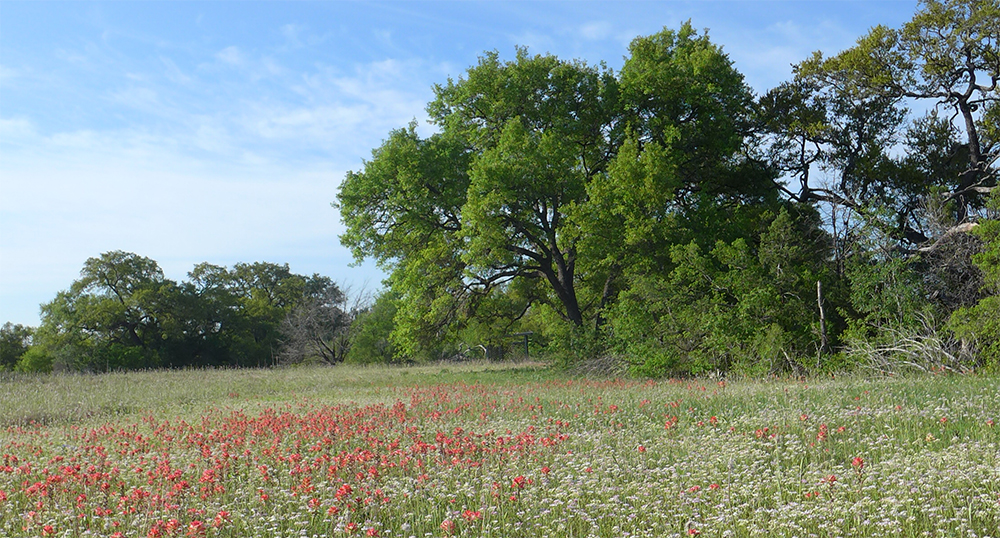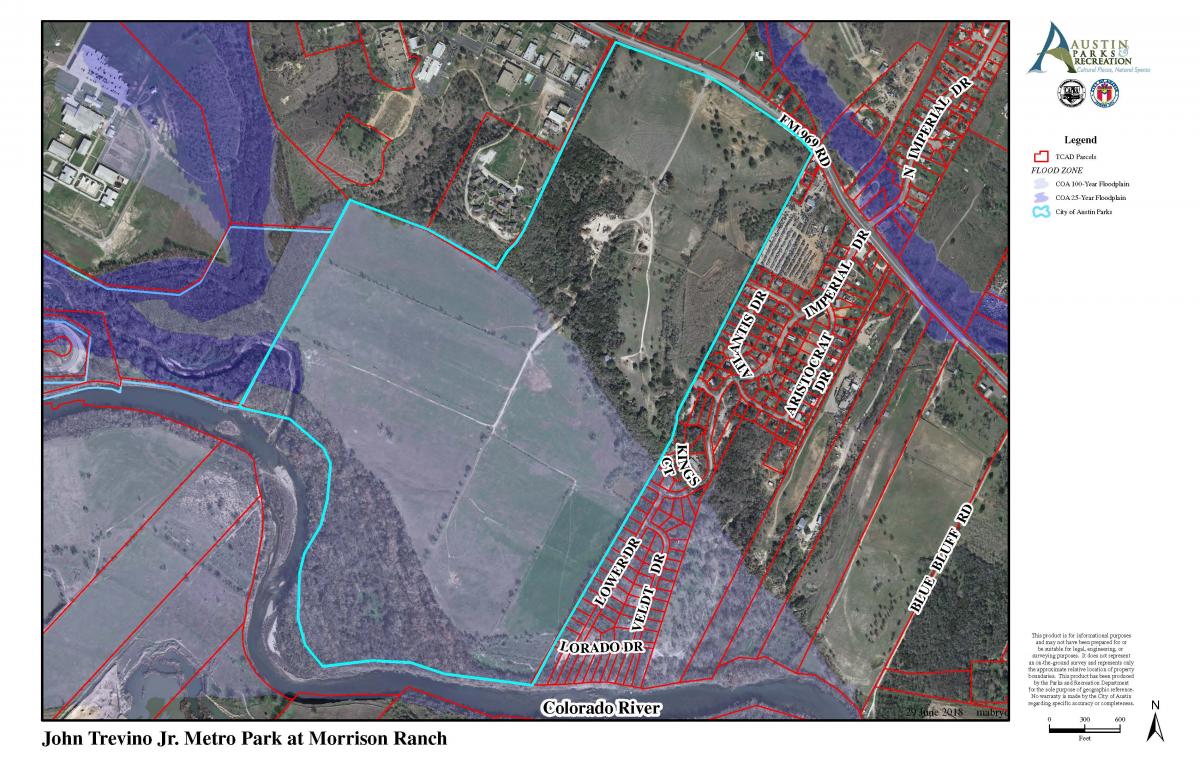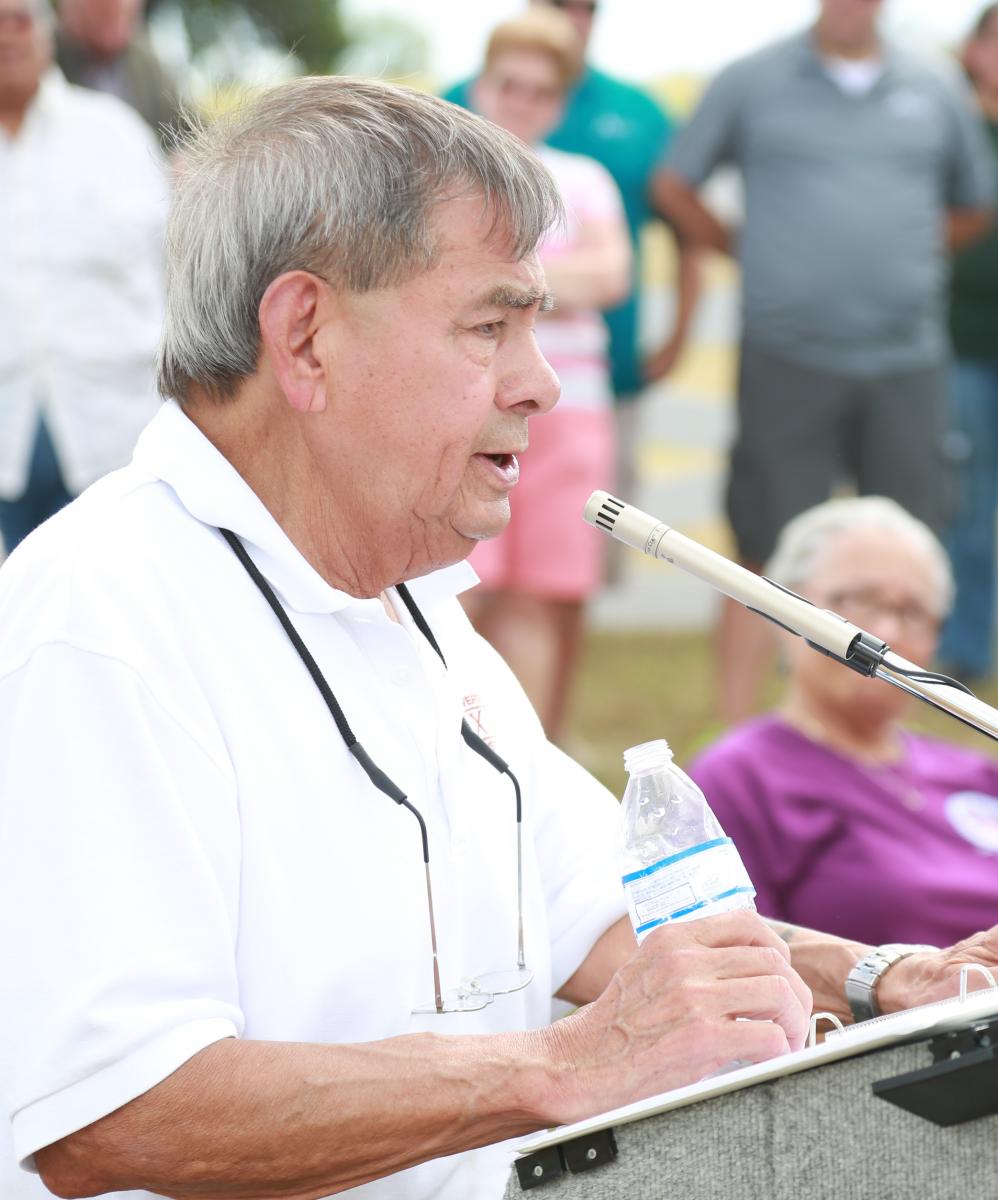The vision plan for John Treviño Jr. Metropolitan Park at Morrison Ranch was adopted by Austin City Council on October 15, 2020. John Treviño Jr. was the first Mexican-American elected to City Council who went on to serve 14 years. This metropolitan park was named to honor his work for the East Austin community and Austin as a whole. Phase 1 Implementation of the vision plan is in design. City Council Districts 1 and 2

Background
John Treviño Jr. Metropolitan Park at Morrison Ranch consists of approximately 330 acres of parkland on FM 969. The property, which is bound by FM 969 to the north and the Colorado River to the south, was purchased by the Austin Parks and Recreation Department in 2003. In 2006, Austin City Council voted to name the park after John Treviño Jr., Austin’s first Latino Council Member and Mayor Pro Tem.
The property has been utilized for farming and ranching operations up until 2016. It currently contains a paved entry drive, two-track dirt roads, a farm house and several out buildings. From FM 969, the site slopes up gradually before dropping off to relatively flat open farm fields and riparian vegetation adjacent to the river. Approximately, two-thirds of the property is located within the 100-year floodplain. Vegetation is a mix of field grasses, Live Oak-Ashe Juniper woods and riparian species along the river.
The vision plan was adopted by City Council in 2020.
View the Final Vision Plan (PDF, 19 MB)
View Vision Plan Boards (PDF, 2 MB)
- About John Treviño Jr.
-
John Treviño Jr. was the first Mexican-American and Latino to serve on Austin City Council and be selected as Mayor Pro Tem. He served on Austin City Council from 1975 to 1988 and became the first Latino mayor when he stepped in as Interim Mayor. The following biography is taken from Mr. Treviño's obituary:
A dignified warrior earned his eagle’s wings on April 4, 2017. On John Treviño Jr. were pinned the dreams, hopes, and aspirations of his beloved Austin Mexican American community and he did not fail them. His passing leaves a void and sadness in all who knew and loved him.
Born October 18, 1938, John was educated in local public schools. At age seven, he became an altar server, traveling with the priest to nearby Spanish-speaking communities. These early morning services blossomed into his lifelong commitment to God and stimulated the roots of his public service.
At 17, and with his father’s written permission, John became a paratrooper in the Army’s 82nd Airborne Division. He later returned to Austin and worked different jobs.
Noting his leadership style, one day a priest told him, “You can do more”, so he did. In 1965, he led an anti-poverty initiative that brought internal Revenue volunteer staff to East Austin to help the poor complete their W-2 tax forms. It was also there he helped establish a neighborhood cleanup effort that became the city’s bulk trash collection.In those days, the poor and sickly sought medical attention in the Emergency Room of Brackenridge Hospital. Through John’s leadership, health clinics were established in low-income neighborhoods, giving the needy free and low-cost medical services near their homes. To support these efforts, students from the University of Texas at Austin School of Social Work, whom John addressed in their classes, volunteered to work alongside community members. Volunteers in Service to America (VISTA) workers also came and, under John’s supervision, created the Austin Tenant’s Council and the Meals on Wheels program, which still continue.
Energized by John’s advocacy and successes, people convinced him to run for a seat on the Austin City Council. On his second attempt, John was elected in 1975 and became the first Mexican American to serve. His peers elected him Mayor pro tempore and he subsequently became interim Mayor, when the post was vacated.
As a council member, he advocated awarding city business contracts to women and minorities, a program now known as the Department of Small and Minority Business Resources. He encouraged infrastructure improvements in minority neighborhoods. He ensured women and minorities were included on city boards and commissions and also led the initiative to diversify city staff. He represented the city on the Capital Metro Board of Directors for 12 years and was a founder of several sister city programs, including those in Saltillo, Mexico; Lima, Peru; Adelaide, Australia; Koblenz, Germany; Maseru, Lesotho; and Taichung, Taiwan.
After he left City Hall in 1988, he worked at UT Austin where he helped the Historically Underutilized Business (HUB) Program. He retired in 2016.
In 2006, the City of Austin named a 320-acre tract, John Treviño, Jr. Metropolitan Park at Morrison Ranch in his honor. A formal dedication of the yet-to-be developed park took place in 2016.
Of his many accomplishments, John cited several of which he was particularly proud of: competing an unassisted triple play as a second baseman playing for the Mixers baseball team in the Pony League; becoming a paratrooper; being an Austin City Council member and serving his community along with the late Travis County Commissioner Richard Moya, former State Senator Gonzalo Barrientos, campaign manager Miguel Guerrero, and the late Alex Limón. He was always especially proud of his family and children.
Preceding John in death were his birth mother, Salome Treviño; father, Juan Treviño; brother, Pete Moreno; and son, Paul Treviño. John is survived by the mother of his eight children, Connie Loya Treviño; his children, John, Mary Theresa, Peter (wife Sandra), Michael (wife Mary Alice), Mark, Patricia (husband Frank), and Jesse (wife Laura); as well as his special friend of many years, Judy Ford. John is also survived by his sister and surrogate mother, Josephine Zamarripa; brother, Ignacio “Nash” Moreno (wife Tommie); sister, Dora Ortiz (husband Jesse); 19 grandchildren; 20 great-grandchildren, 1 great-great-grandchild; and numerous nieces, nephews, relatives and friends.

- Community Engagement for the Vision Plan
-
Austin City Council Meeting
The Austin City Council adopted the vision plan on consent on October 15, 2020.
Boards and Commissions
- Land, Facilities and Programs Committee (June 5, 2020)
- Parks and Recreation Board (July 10, 2020)
- Design Commission (July 17, 2020)
- Environmental Commission (August 5, 2020)
Community Meetings
Community Meeting #4: Celebrate the Park, Saturday, December 7, 2019
- Preliminary Vision Plan (PDF, 17 MB)
- Meeting Boards summarizing Meeting 3 feedback (PDF)
- Community Meeting #4 Community Engagement Summary and feedback form results (PDF) and subsequent engagement (PDF)
Community Meeting #3: Concepts, August 24, 2019
- Video of the Presentation Meeting Boards (PDF)
- Concepts / Frameworks: Prairie and River (PDF)
- Summary of Online feedback on the concepts on Speakup Austin (PDF) - Closed September 23, 2019
- Community Engagement Summary of Community Meeting #3 (PDF)
Community Meeting #2: What We've Heard, July 11, 2019
- Meeting Boards - English / Tableros de junta - español (PDF)
- Planning Values / los valores de planificación (PDF)
Community Survey #1 - Summary (PDF), Closed July 3, 2019
Community Meeting #1, Saturday, June 8, 2019
Small Group Meetings
Site Analysis and Existing Conditions, Opportunities and Challenges (ECOC) Report - click here to view PDF (17 MB)
Project Description
Park improvements will begin by focusing on preparing the property for the first phase of implementing the Vision Plan. Improvements will include the removal of ranch equipment, barbed wire, dilapidated and unsafe structures, and the securing or reinforcing of any existing structures to remain. The process will also include a safe vehicle entry access, parking area, trailhead with seating and maps, drinking fountain, shade structure, nature trails, a decomposed granite loop trail, and a nature play area.
Anticipated Schedule
- Spring - Fall 2023: Development Constraints and Permit Analysis (Complete)
- Winter 2024 - Summer 2025: Design Development, Permitting process, Construction Drawings
- Summer 2025 - Spring 2026: Bidding and Construction
Please note that as in any construction project, schedules are projected as accurately as possible. All dates are subject to change due to the nature of construction and the weather.
Funding and Resources
Phase 1 construction is funded by the voter-approved 2018 bond for Parks and Recreation improvements.
Contact Information
For more information, contact PARD Project Manager, D'Anne Williams, by email or by phone at +1 (512) 974-9456.
RECENT NEWS
